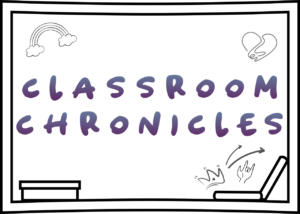In a world filled with information overload, the art of storytelling stands out as a timeless and powerful tool for engaging minds and conveying important lessons. Teaching stories, with their inherent ability to captivate and enlighten, have long been recognized as a valuable resource for empowering individuals to think critically, develop empathy, and embrace personal growth. In this article, we will explore the profound impact of teaching stories, uncover the embedded lessons within them, and discuss their role in creating empowered educational environments. Join us on this enlightening journey as we delve into the transformative power of storytelling.
The Power of Narrative:
Stories have an innate ability to captivate our minds and transport us to different realms. Through the ages, storytelling has served as a fundamental means of cultural transmission, preserving traditions, and conveying universal truths. By immersing ourselves in narratives, we develop emotional connections and empathy, enabling us to better understand the world and those around us.
Lessons Embedded in Teaching Stories:
Teaching stories have a rich history across cultures, serving as vessels for wisdom and moral teachings. They offer valuable insights into human nature, ethical dilemmas, and the consequences of our choices. By examining teaching stories, we can uncover universal truths and values that transcend time and place. Analyzing these stories also cultivates critical thinking and problem-solving skills, as we learn to decipher hidden meanings and draw connections to real-life situations.
Personal Transformation through Teaching Stories:
One of the most remarkable aspects of teaching stories is their potential to spark personal transformation. As readers or listeners, we often find ourselves relating to the characters and situations within the narratives. Whether it’s the triumphs or failures of story protagonists, we can learn valuable lessons and gain inspiration for our own lives. Teaching stories provide a mirror for self-reflection and a catalyst for personal growth, empowering us to embrace change and strive for our full potential.
Empowering Educational Environments:
In the realm of education, teaching stories have a vital role to play. Integrating storytelling into classrooms and educational settings enhances student engagement and motivation. As teachers, we can harness the power of stories to create a shared experience and develop a sense of community within the classroom. By discussing and reflecting upon the lessons embedded in teaching stories, students gain a deeper understanding of themselves and the world around them, fostering empathy, tolerance, and a broader perspective.
Teaching Stories for Ethical Development:
Ethics and moral values are crucial aspects of personal and societal development. Teaching stories provide a unique platform for instilling these values, as they often present dilemmas and moral choices for characters to navigate. Through exposure to diverse stories, readers and listeners can develop a more nuanced understanding of right and wrong, cultivating empathy and compassion for others. Teaching stories have the potential to inspire individuals to become ethical leaders and make a positive impact on the world.
Applying Teaching Stories to Real-World Challenges:
Teaching stories serve as invaluable resources for addressing real-world challenges. By drawing lessons from historical events and societal issues depicted in teaching stories, we can gain valuable insights into the complexities of the world we live in. These stories inspire critical reflection and encourage individuals to take action, promoting positive change in their communities. By using story analogies, we can analyze contemporary problems and explore alternative solutions, fostering innovation and creativity.
Practical Strategies for Incorporating Teaching Stories:
Incorporating teaching stories into educational settings requires thoughtful planning and implementation. Educators can select stories that are appropriate for different age groups and contexts, ensuring relevance and engagement. Interactive activities, such as discussions, role-playing, or creative projects, can enhance the learning outcomes and deepen students’ understanding of the lessons within the stories. Collaboration among educators can lead to the development of a comprehensive teaching story curriculum, enriching the educational experience for students.
Takeaway
Teaching stories possess a unique power to illuminate our minds, spark personal transformation, and empower us to make a difference in the world. As we have explored in this article, these narratives not only captivate us but also convey timeless lessons that transcend cultural and temporal boundaries. By embracing teaching stories, we create empowered educational environments, nurturing critical thinking, empathy, and ethical development. Let us embark on this journey of storytelling, and together, we can unleash the full potential of our minds and inspire a brighter future.
In the realm of teaching stories, the possibilities are endless. As we embrace the transformative power of narratives, we open ourselves up to a world of knowledge, inspiration, and growth. So, let us heed the call to empower minds through teaching stories and embark on a path of enlightenment and understanding.

